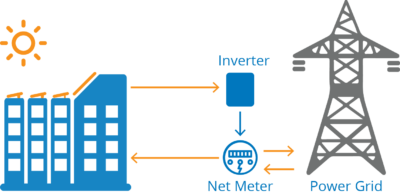How It Works
Discover tailored commercial solar solutions designed uniquely for your business. At Precis Solar, we understand that each commercial system is unique and shaped by your roof space, energy requirements, and financial objectives. Our experts assess your property to determine the ideal size and components for your system. Whether it’s a pitched roof, ballasted installation, carport, or ground setup, we customize solar solutions with precision.
Our commercial solar systems encompass high-quality panels, advanced inverter power stations, and specialized components for cable management and energy monitoring. The cost varies based on your component selection. With Precis Solar, your goals are our priority. We consult closely with you, recommending the best combinations that align with your objectives.
Trust us to identify optimal installation locations—be it on your roof, above parking lots, or on vacant land. Start your journey towards sustainable energy solutions with us today!



Explanation of Net Energy Metering/Demand Charges
- Bucket 1 – A fixed monthly fee, the amount of which depends on the rate tariff you are on. This fee remains even after you go solar.
- Bucket 2 – Time of use charges. Commercial customers are charged based on the time of year and time of day that a given kWh is consumed. Rates are higher in summer vs. winter, and higher in the afternoons/evening than in the middle of the night.
- Bucket 3 – Demand charges. The utility actually tracks usage in 15-minute increments, and the demand charge is based on the highest peak in a given month or quarter. The demand charge is often half of a commercial customer’s bill and sometimes even more!

When a business adds solar, it enters into a “Net Energy Meter” agreement with the utility company. This agreement states that the utility will credit the customer at the same rate it would charge the customer for a given kWh. For the sake of explanation, let’s assume that a business is open 5 days a week – Monday through Friday. On Saturday and Sunday, very little electricity is being used, but the solar system is creating power, that power is going back out into the grid, and the customer is being credited for the power it created. On Monday morning, staff shows up to work and turns everything on, the credit that was created over the weekend is used up before, and new electricity charges are billed. This give and take between kWh used and created is constant, hour by hour, day by day, and month by month.






